The new generation of fashion rebels
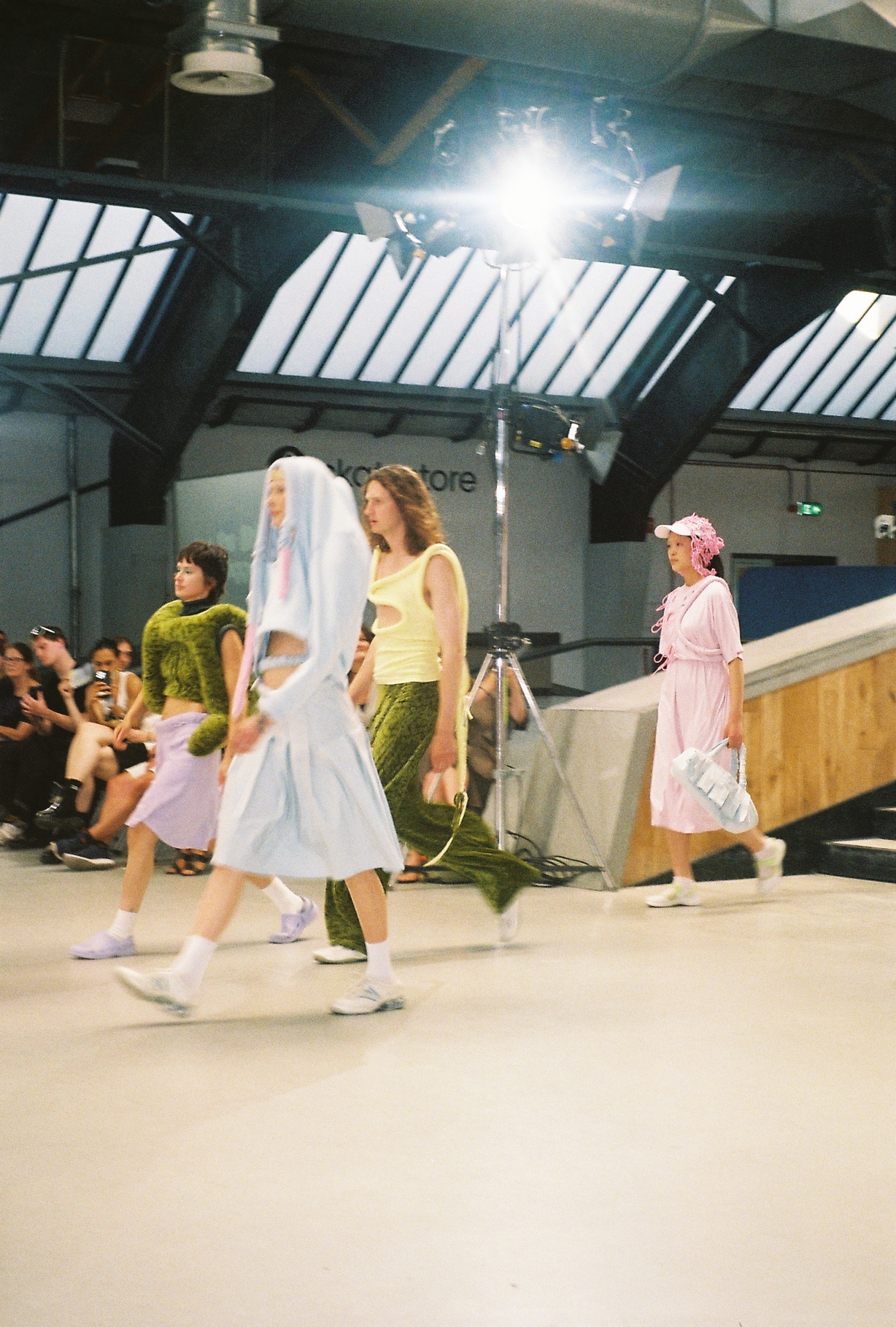
Always on the lookout for fresh talent, we know that KABK is the place to really pay attention to. And now that the graduation season is upon us, we’re excited to introduce you to the new generation of fashion rebels! Once again proving the limitless possibilities of a creative mind, this year’s Fashion and Textile graduates delivered: from gentle pastels, reconstructed workwear to spencers made out of casino chips, the collections presented radical, strong-spirited explorations of the craft while honouring the traditions of the past. In the aftershock of witnessing the youthful genius that has been brewing at KABK – and is now ready to take over the big world – we speak to Casey Hefferon, Di Wang,and Annalie van Doorn, about everything from their inspirations, process and future visions. Also, keep an eye our for our bigger photo report here.
Hey Casey, introduce yourself!
I’m Casey, I’m 26 years old, I’m from a place in North-East England called Northumberland. I grew up on a farm and had a very sheltered childhood. When I got older, I got introduced to city life and moved to Amsterdam. I started at AMFI, but then I dropped out to go to KABK. For me, it’s more creative and hands-on here.
You seem to love pastels and soft shapes. What was the inspiration for the collection?
I have ADHD, and I was only recently diagnosed. My preconceived ideas before were based on huge amounts of research, and I would look to my peers to see how “you’re meant to do it”. This year, I took I took a step back and decided to focus on something very simple. I began with making earrings with clay. This was a medium I could sculpt, make it tiny or scale it up. So, the idea was just to scale up what I was doing with these tiny clay pots, and let it grow from there. There wasn’t really a deep story to it – the process was mainly about playing and allowing myself to have the freedom to do that, while maintaining my own clarity.
It doesn’t have to be deep to be meaningful.
I think it also brings you so much space – and fun! If you have one element you decide to focus on, you start finding endless possibilities.
So true! What was the hardest part about making the collection?
I’m not the best from the technical point of view. I have these big ideas that take time to translate through a sewing machine. I know that spending time on the details, like pockets and zippers, elevates the garment to a different level. But for me, this refinement is the hardest part. You’re already excited about the next thing, but you have to finish all these little bits.
What kind of audience do you want to connect with?
Maybe, just from the colours, it would attract more young people, but it’s for everyone. I never have an audience in my head. I mainly just base everything off myself – I hope that doesn’t sound too pretentious, haha. Even for patterns, I use all my clothes. I have nothing left right now – I just sacrificed my whole wardrobe for my work. It’s very personal, which is what I like about it. I know exactly what I want to wear, and I know other people can relate to that.
Would you see your pieces as wearable or more experimental then?
It’s a mix. Some pieces are every-day, and I have a few outfits that have these big sculptural shapes.
What is your favourite piece?
The cut hoodie in baby blue!
What are you most proud of in your collection?
I think the spontaneity of it all. I think it represents me in a very good way. I’ve studies at KABK for 5 years, so it’s nice to wrap it up with this collection. You can see it going to the future, it’s something I can carry on and develop later.
And what are you planning to do with it in the future?
I do want to make a small collection for sale, just to see what people think. I also need to do my internship, for which I might go to Berlin or Milan.
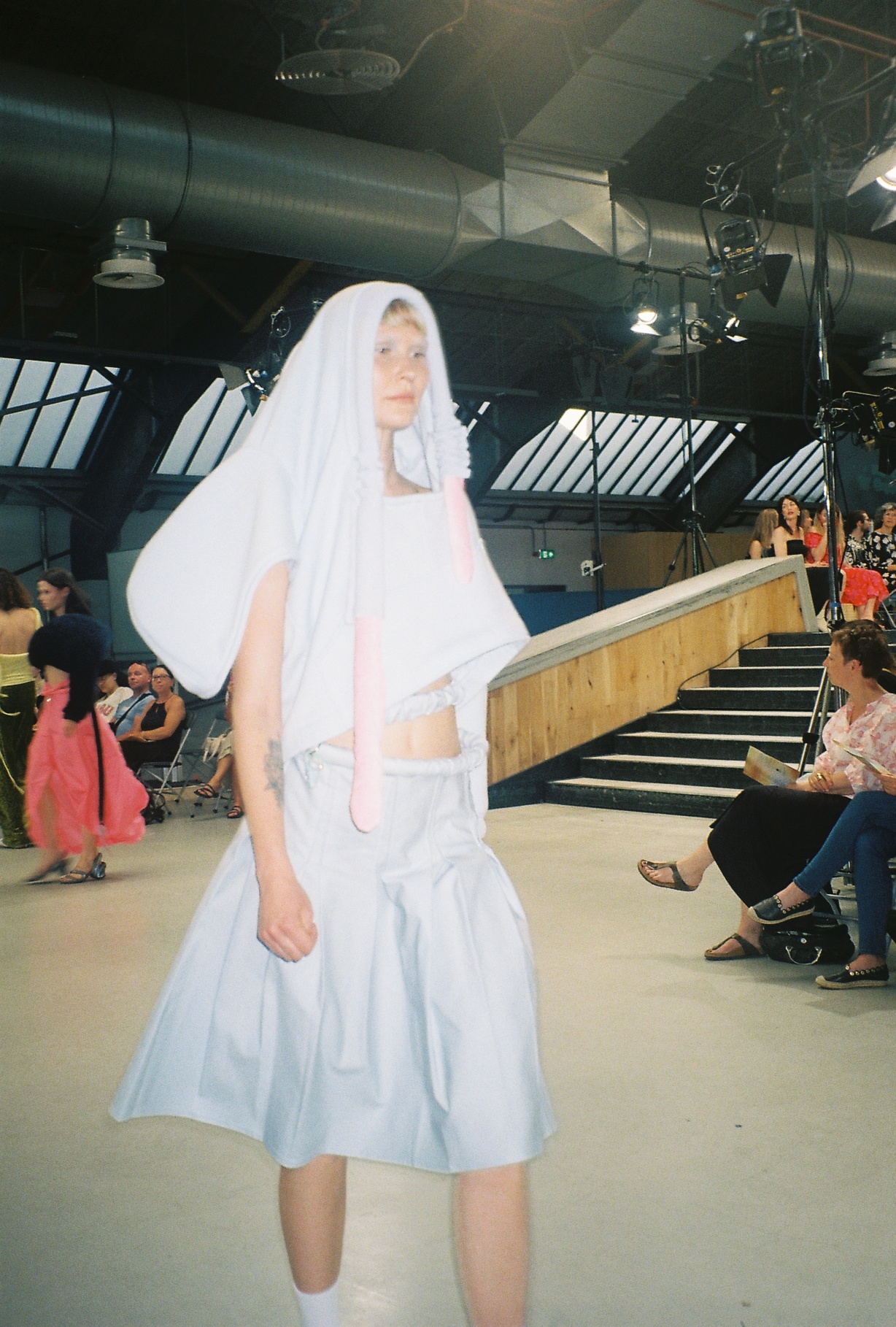
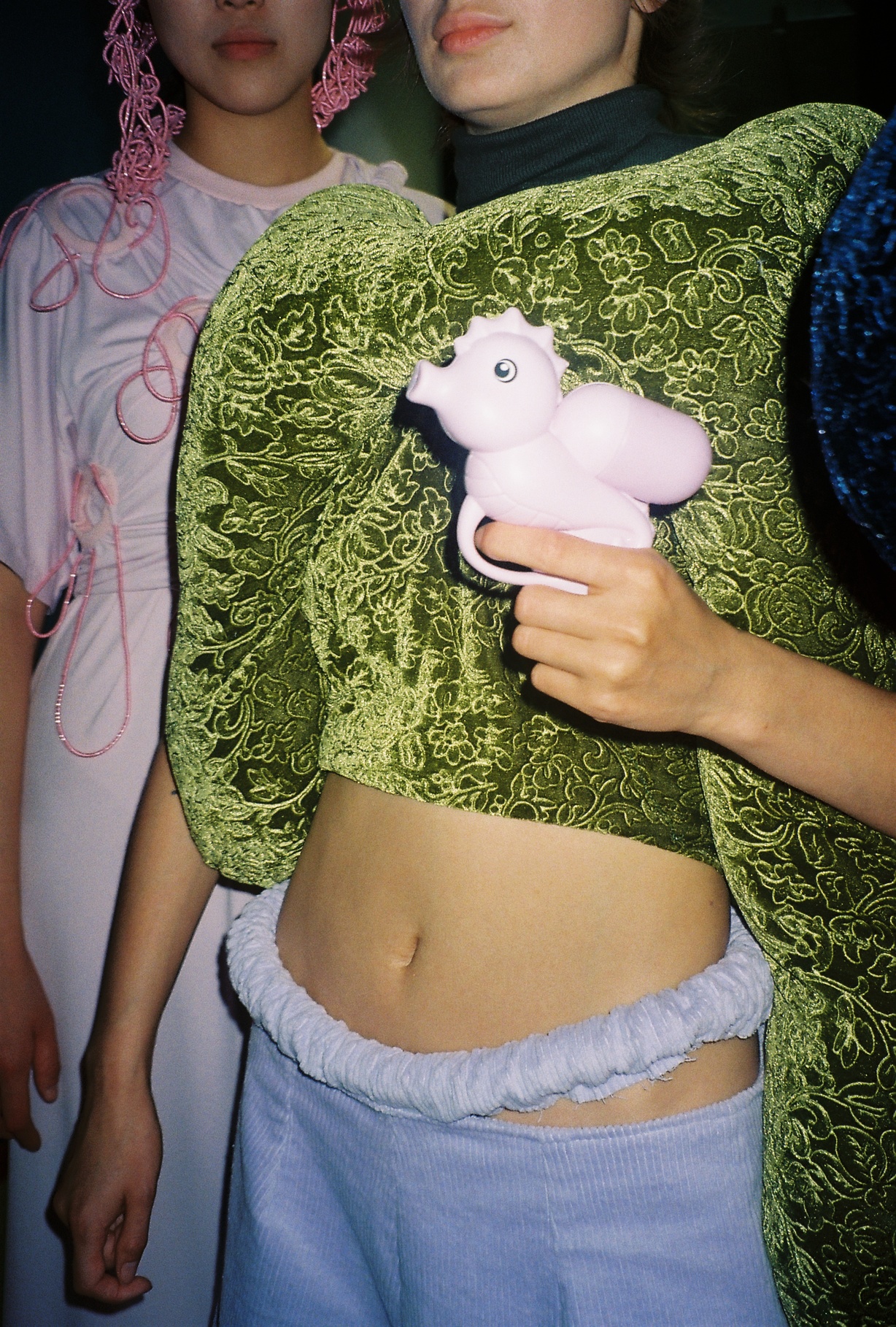
Hey! How are you? Are you ready for the show?
Good! Bit busy with the final touches of the collection. Trying to stay calm!
I can imagine! Can you tell us about yourself?
I’m from China, I did an art and design degree there, but after graduating and working in the fashion industry for several years, I still wanted to learn more. So, I came here!
Talk us though your collection!
My collection is mainly inspired by my childhood memories. I spent a lot of time with my grandparents and they influenced me a lot. My grandma used to share her youth stories with me – what she was doing, how she met with my grandfather while they were in military. She’s really good at handicrafts like sewing, crochet, and a lot of patchwork. So, I incorporated these into my collection as well!
And how does this translate to your pieces visually?
My work builds on traditional workwear and incorporated with shapewear, crochet and patchwork into the design. Where traditional workwear shapes and bringing some personal signature in the design
What is your signature?
Deconstructive parts combined with traditional shapes. For example, I have this combined men’s shirt and a women’s blouse to merge masculinity and femininity. I use a lot of blue, black, and earthy tones. I also collected a lot of recycled silk fabrics that I add as a lining part to give more colour. My favourite piece is made from yellow-toned plant-dyed fabric. The material is very difficult to find. I have this piece where the front part is traditional workwear design, and the back part is inspired by a baby wrap that my grandma used to use to carry me on her back. It looks flat on the hanger, but when the model wears it, it will become a 3D shape.
What was the hardest part about making this collection?
Collecting all the inspiration together. My grandma is in China, so I had to ask my family to send a lot of her stuff to me, and to organise different types of materials to be sent. And the time for this collection is very limited – I ended my internship very late so I started my collection in February. The timing was quite intensive.
Whoa, I can imagine. Where did you intern?
I did it at Byborre in the atelier studio. Mainly focused on helping them make the samples, cutting patterns, sometimes hands-on stuff.
Did you learn a lot?
I practiced a lot of sewing techniques and made them faster. Also, I learned how they face problems that arise, in a professional way.
What are you most proud of in your collection?
One material I chose I’m proud of because I want to design in a small and sustainable way. So, I chose a material that was plant-dyed, and natural raw materials like cotton, wool, and combined some crafts into it.
What are your plans for the future?
After I graduate, I want to continue learning and create my own brand.
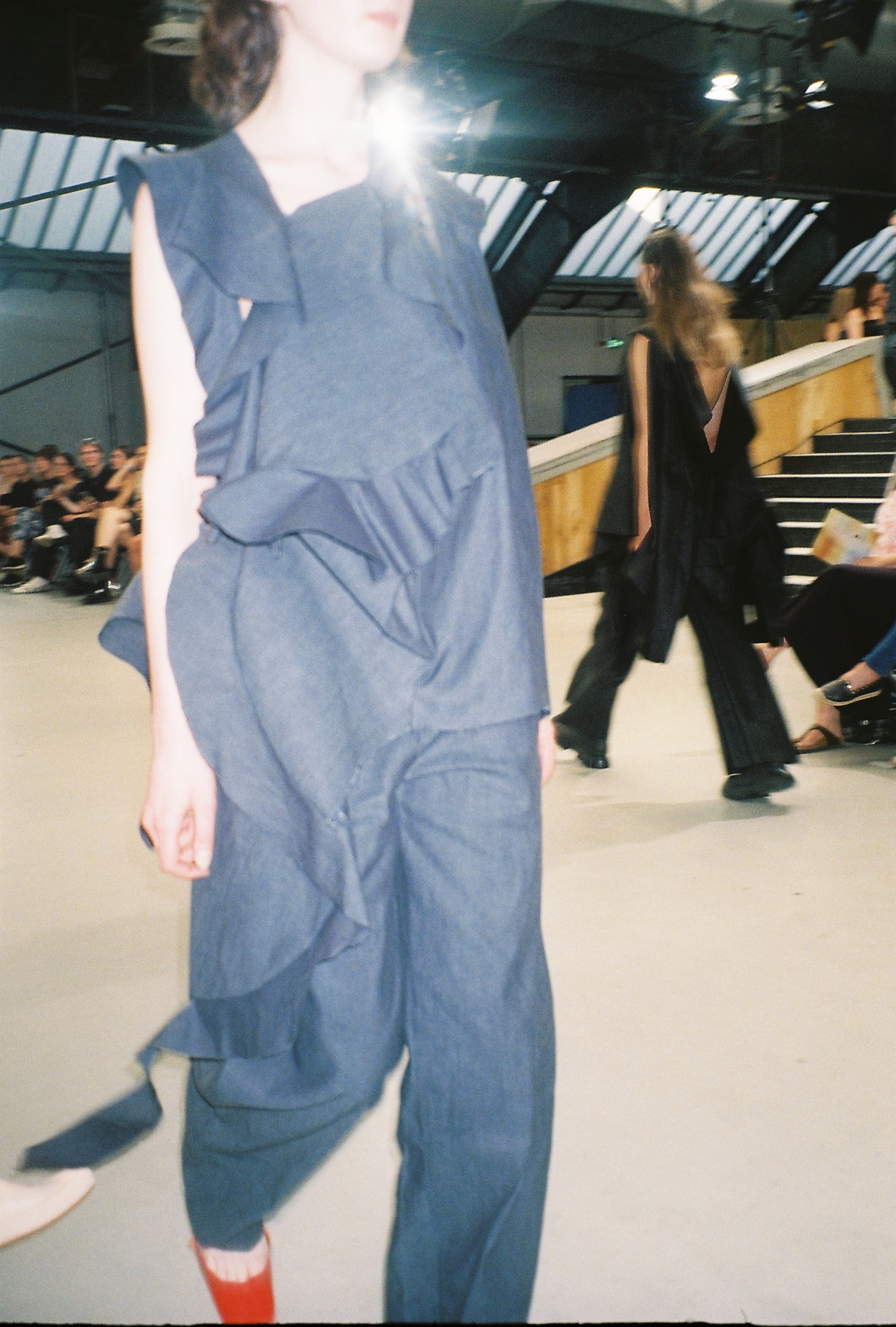
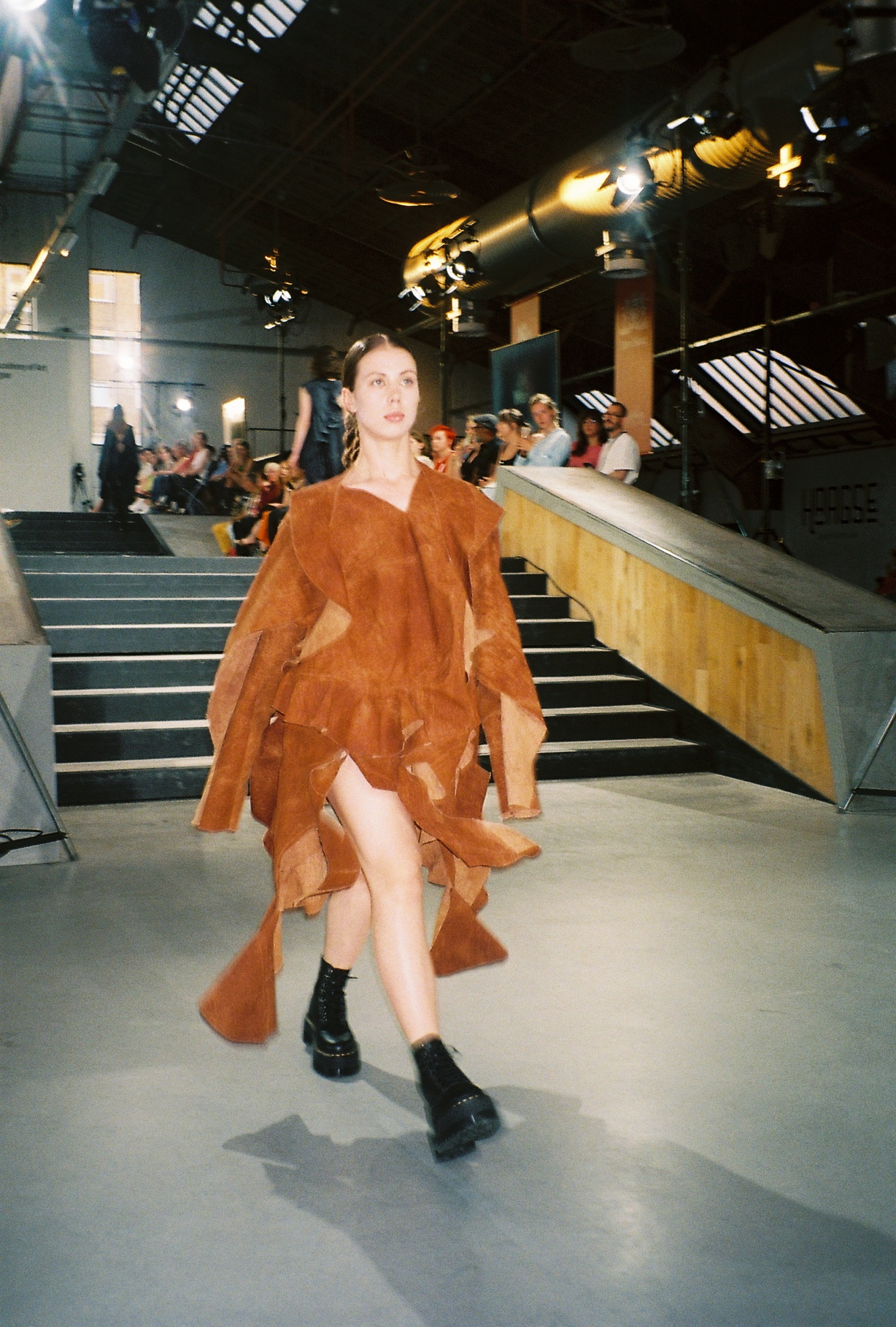
To begin with, can you tell us a bit about yourself?
I’m 28 years old, I started with studying fashion at Arnhem 8 years ago, I then worked in marketing, and after that I decided to travel around the world for 2 years. When I was in Guatemala, I realised that I wanted to focus everything on my career in fashion. So, I decided to do 4 more years of studying, and went to KABK. I’ve been into fashion and art since I was little, but it’s only now that I’m beginning to really know who I am and how I work. Most of the time, even if you think you know, you don’t know.
For you graduation collection, you mention your grandmother as a big inspiration. What is her presence within your work?
She’s always been a big inspiration to me because she doesn’t really see well, or leaves the house much, but still takes hours and hours to dress up! Three weeks ago, she fell and broke her hip. In her recovery stage – even when it wasn’t clear if she’d recover at all – appearance still played such a big role for her. She would always be dolled up! My parents separated when I was 8 years old and I didn’t experience the life everyone had that long. For this reason, I have a different interest in certain things from my brother and sister, such as the way we express ourselves, which we always joke about. The elitist way of dress, the appearance and the psychological behaviour behind it has always been fueling my creativity. I actually also wrote my whole thesis around it.
What did that reveal?
I first learned a lot about how our self-esteem works and what kind of identities we have. We tend to have a lot of social identities, and as soon as you realise our social identity is a perception and not a permanent state of mind, we get connect closer to our personal identity, which will increase our self-esteem. It becomes even more complicated and inter-connected when you look at clothing as a symbol for social status. I also found that I’ve always been fascinated by the elite – their expression, way of thinking and behaving, as I am completely different from that. An example of this is when you look at the Kentucky Derby in America: I find it hilarious that people dress in such an overwhelming way just to support some animal abuse that lasts like two minutes. During the research for my thesis I also learnt about status anxiety, that is a really big thing in the West.
How was this reflected in your collection?
Old money and the irony of its expression is central to my work. I looked at Kentucky’s Derby and tried to find more deep-seated observations about how people dress. I have this moodboard of what I pick out, and from that I start drawing very abstract shapes. For me, shapes are the bricks of everything I do. I move on to moulages, where I get to very innovative bizarre crazy shapes. I then look at characteristics of an elite garment – like these embroidered emblems with family symbols, and I try to combine them. Also, humour is important – I make a lot of prints. For example, I make a lot of abstract drawings of a jockey, and I play around with them and then think of a name with a word play. I then find ways to incorporate these prints into giant shapes for my garments – everything is very interconnected. I’m also intrigued by how we derive very different values from objects. I was walking through a flea market and I found these real poker chips. I was staring at them for hours – it’s actual money and no one gives a fuck! In a casino, people would kill each other over these chips. So, I bought them all. I wanted to weave them into the most preppy garment – a spencer. The result was amazing: I drilled around 4000 holes and my mum helped me put it together.
Were your family poker fanatics?
No, they weren’t. And now they said they can’t see a chip ever again.
What were the biggest challenges about making this collection?
For me it’s always really hard to make choices. I always have a shitload of ideas and am very open to everything. I had a very good internship where I got to do a lot of moulages – and they chose one of my shapes and implemented it into a blazer. I made like a thousand of them and they only picked one, but it was everywhere. There, I learnt that I have to force myself to choose one shape and really squeeze it out. In the end, it makes it stronger.
Kill your darlings.
Exactly! I don’t have to show everything I have yet.
What are your plans for the future?
I have a lot of plans. Staying open is very important, because so many collaborations and opportunities can come by. I also just want to promote the collection. It’s nice that we are so creative, but it’s really hard to put it on the market.
Are you going to miss KABK?
Yeah, I’m going to miss the freedom and my teachers, although I definitely hope to stay in touch with them!
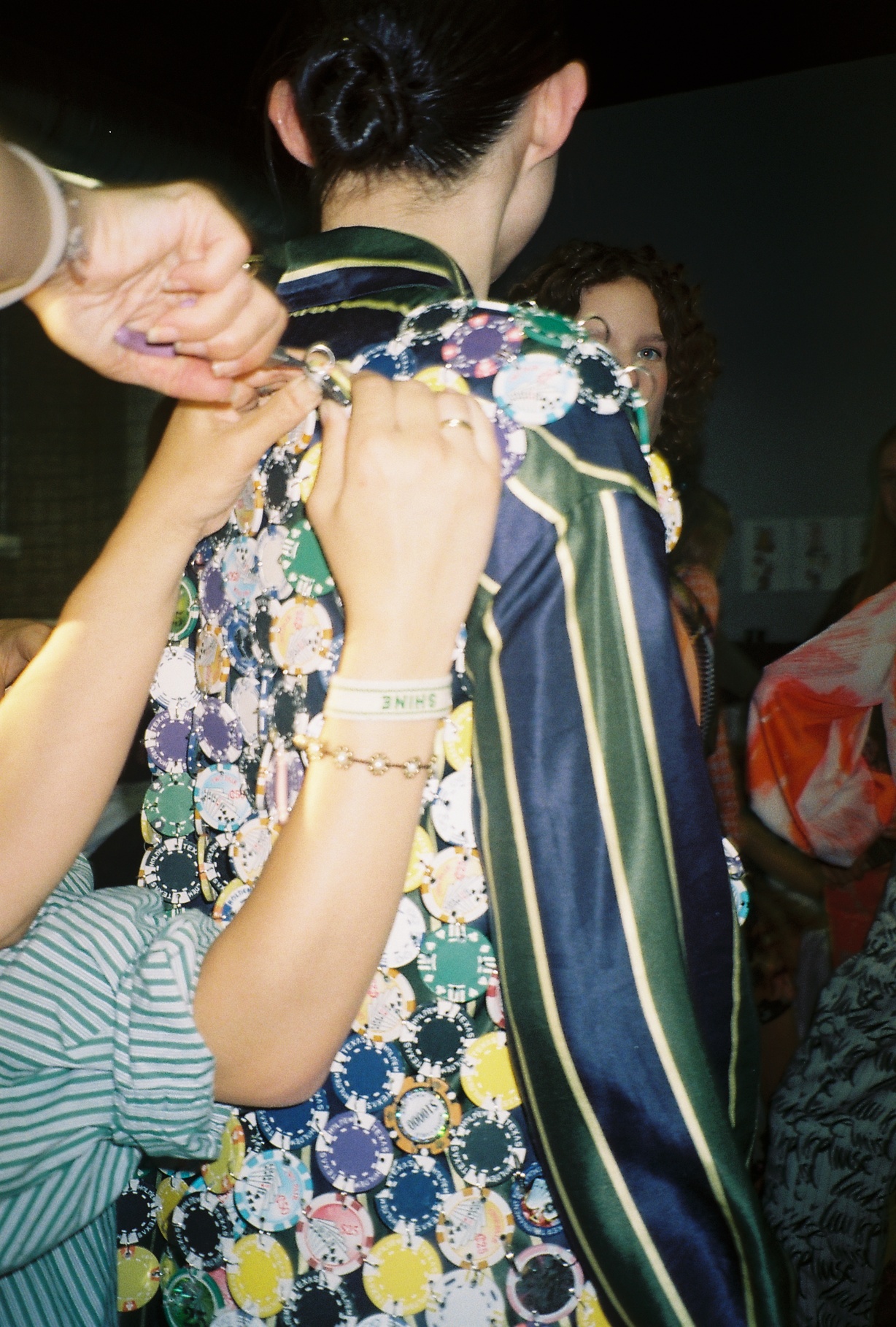
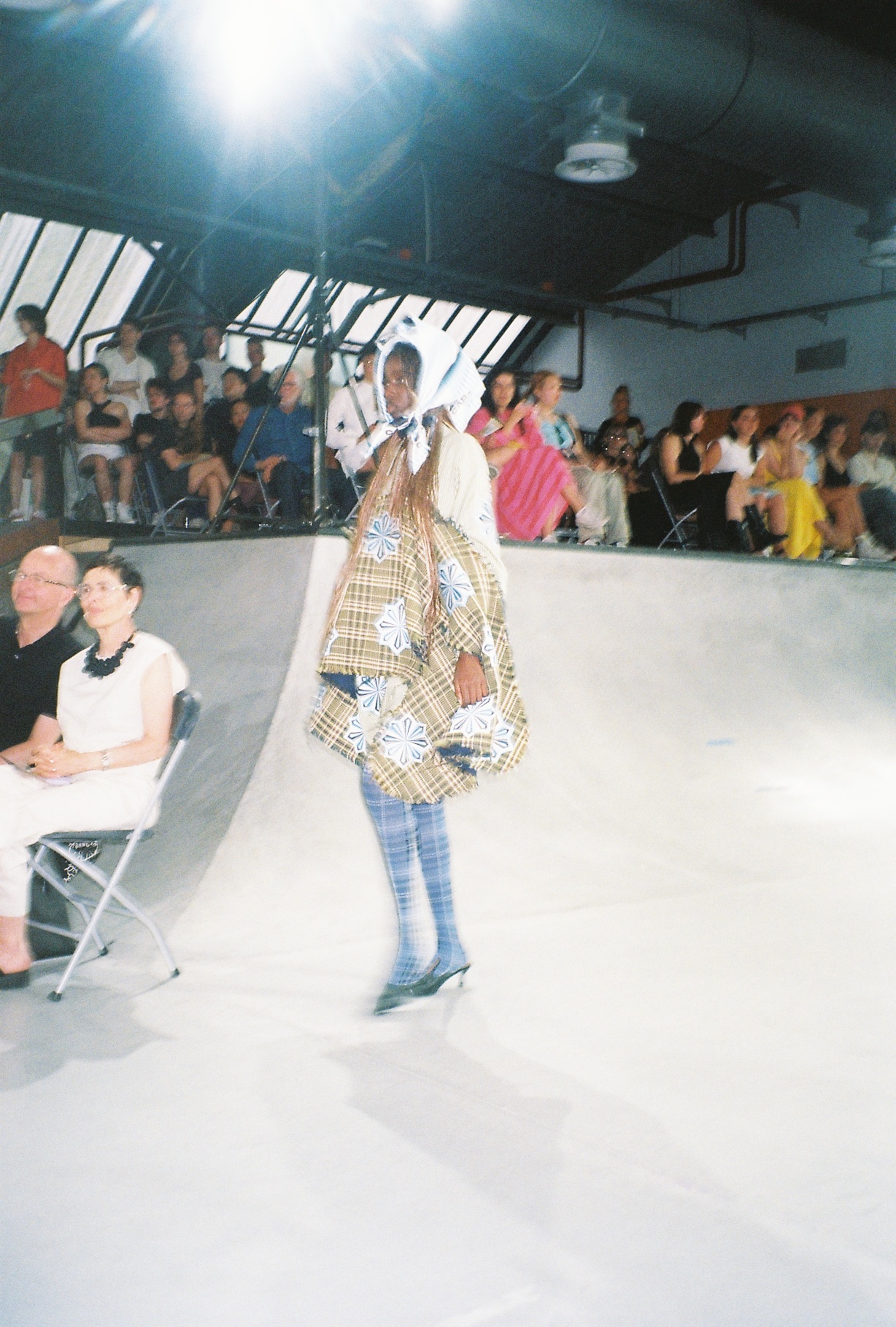
Notifications